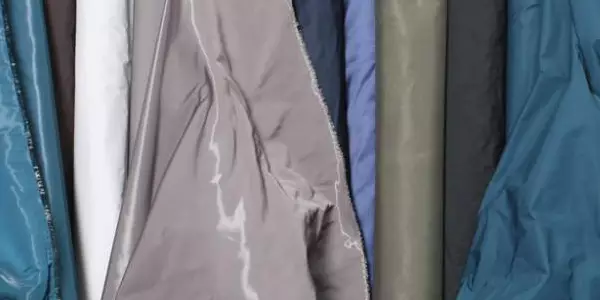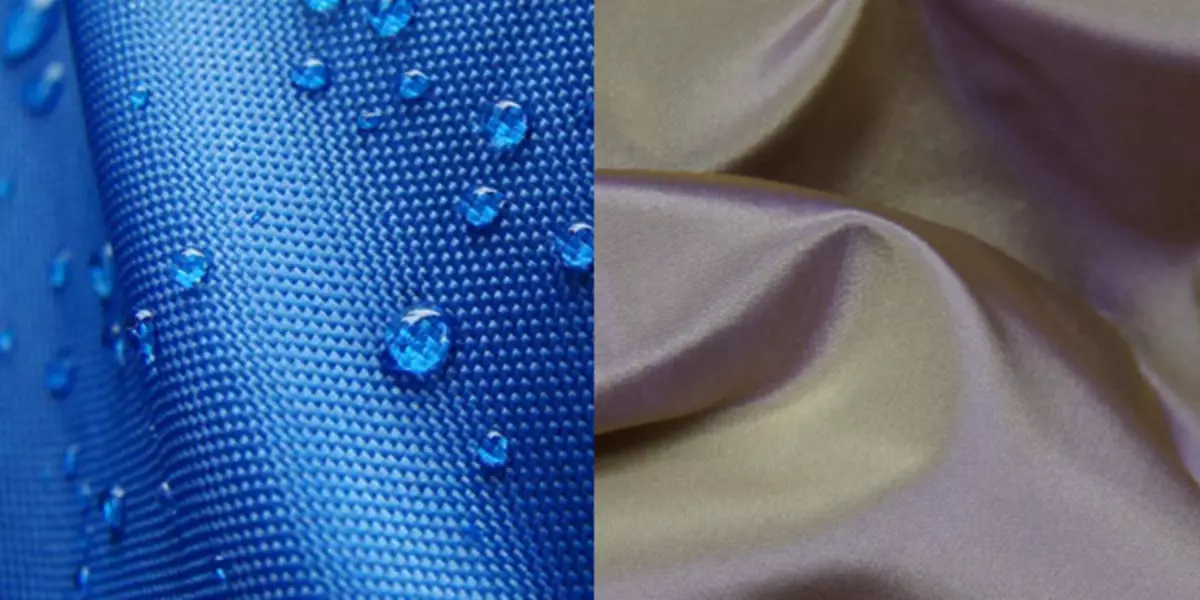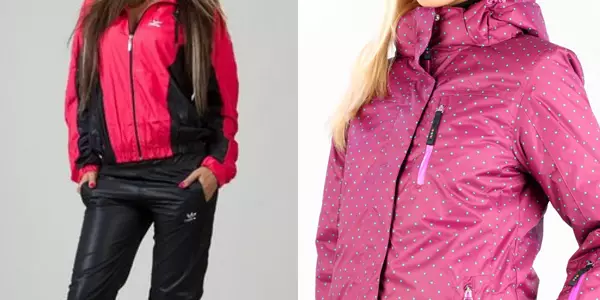The problem of how to hide from bad weather, never lost the relevance, and the cloak was a mandatory wardrobe subject at all times and all classes. For a long time, it was predominantly dense woolen and cotton fabrics for its manufacture that little helped with a strong and long-term rain.
With the advent of rubber, rapid raincoats appeared, which were pretty heavy. And only about half a century ago, a synthetic casing fabric began to be made, which not only protected from water, but also was thin and easy. Since then, the range of waterproof materials has been significantly expanded, and their properties have significantly improved.

Properties of cloak
The first cursed tissue that has received a mass distribution is the famous Bologna, developed by the Italian chemist Natta in the mid-fifties of the last century based on isotactic polypropylene. A few years later, the fabric under the same name began to be made in the USSR, it was a piping cloth with a polyacryl layer. Thin and light Bologna is produced so far, does not pass water, but it absolutely does not let the air. If we talk about the new materials of this group, their characteristics are significantly improved. Modern cloaking fabric:
- is light and flexible;
- to one way or another provides gas exchange;
- Holds heat body;
- durable, reliable, durable;
- not afraid of UV radiation;
- does not learn;
- not deformed;
- Easy to care.

For the manufacture of cloak materials, synthetic or blended fibers are used, they can have the most diverse texture and are often supplied with special impregnations. Depending on the type and structure, the cloak tissue can be used for special, tourist, sportswear. This practical material never comes out of fashion. It is great for bad weather, cold season, long walks and country trips. The cloak is used for sewing not only jackets, a raincoat, coat, overalls, but also costumes, skirts, trousers, it is indispensable in children's clothes.
Article on the topic: Topiaria from Foamyran: Master class with photos and video
Varieties of cloak
The variety of technologies and materials made it possible to carry out the production of a large range of water protecting materials. The main varieties are:
- Camouflated cloak, which includes cotton and polyester fibers, sometimes with polyamide coating.
- The membrane casing - a dense and thin polyester with a membrane coating, which refers to the most reliable and comfortable protective materials;
- Duspo - synthetic matte fabric fabric, is sometimes supplied with polyurethane impregnation;
- Oxford is a hard material of the "Rog's" type with a waterproof layer;
- Taslan - a strong casing fabric with the texture "into a cell" caused by thick fibers due to it;
- Bonding is a two-layer material consisting of a thin knitted cloth and a synthetic layer with polyurethane impregnation;
- Jordan - Iron Overflowing Synthetic Fabric with Lower Polyurethane Layer;
- twil - blended material with vile, not letting moisture;
- The smooth and quilting cloak on the fleece (polyflis), which is a synthetic material duplicated by a flux layer.

A variety of types of impregnations provide protection against water and from wind, hold warm and do not interfere with skin breathing. Fabrics can have the most diverse finish, including a varnish or metallized surface, sequins and embroidery, as well as equipped with a special layer holding down down.
How to care?
Modern synthetically and blended fabric are very simple in care. They are well erased and dry quickly, they are not formed by chances. At the same time, before washing, it is necessary to carefully read the description of the composition and instructions for caring for it.
Special attention requires a raincoat on the fleece, since a cheap tissue is sometimes stratified after washing. As a rule, products from this material are well transferring gentle washing in warm water with soft detergents (if otherwise indicated in the manual). Sew their best spaced on her shoulders.
Article on the topic: Ideas for the manufacture of buttons in the form of flowers of fabric
